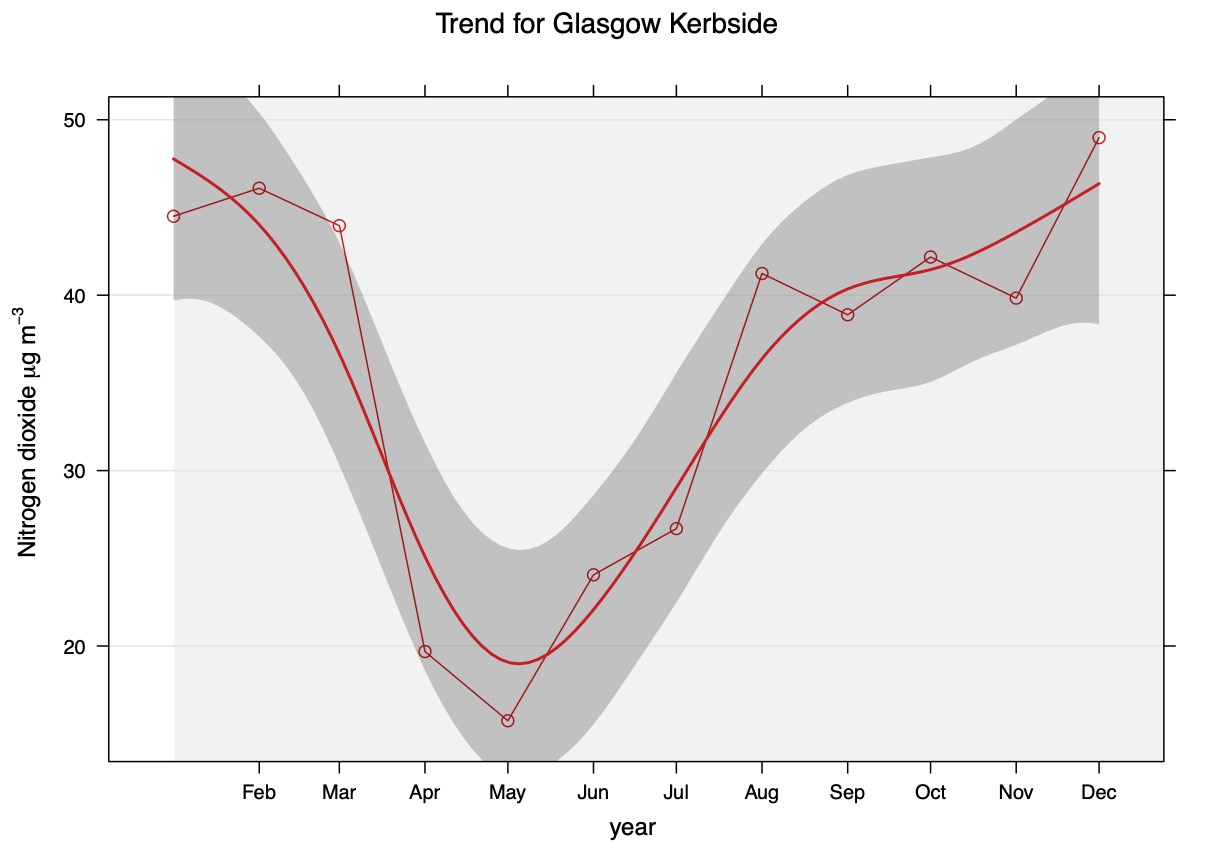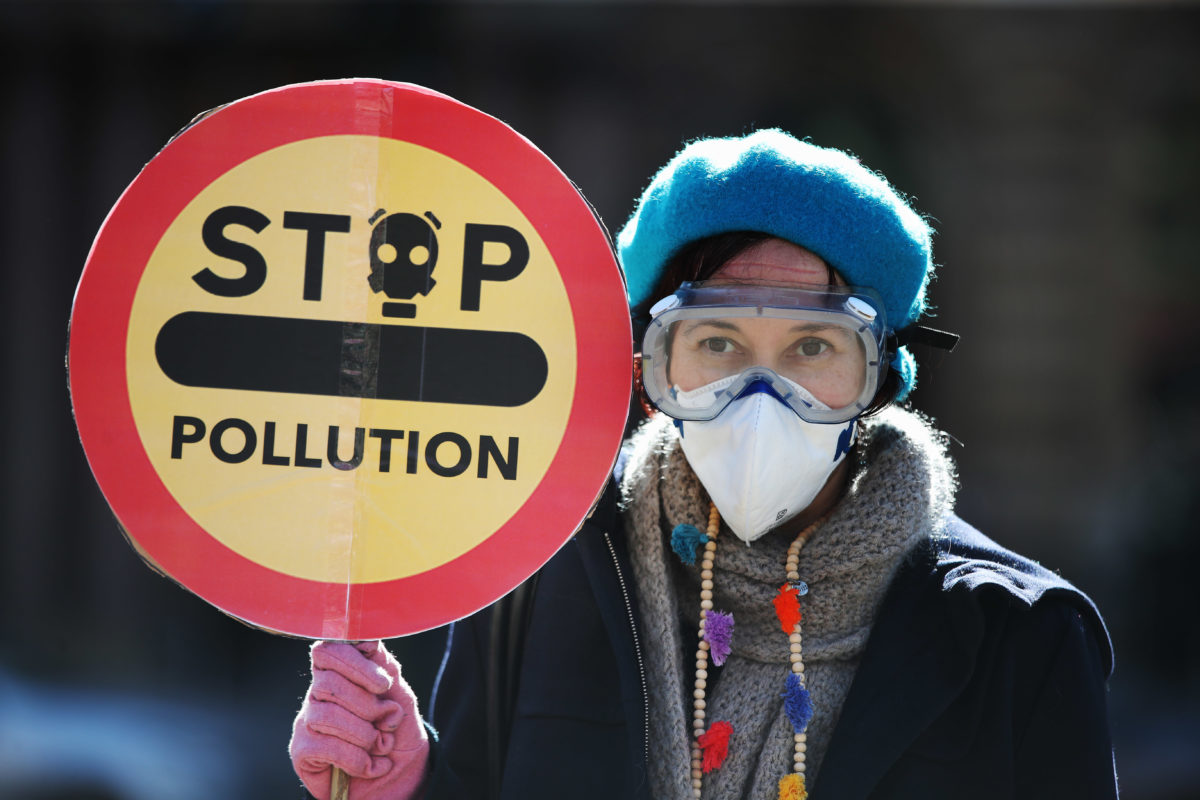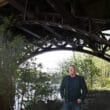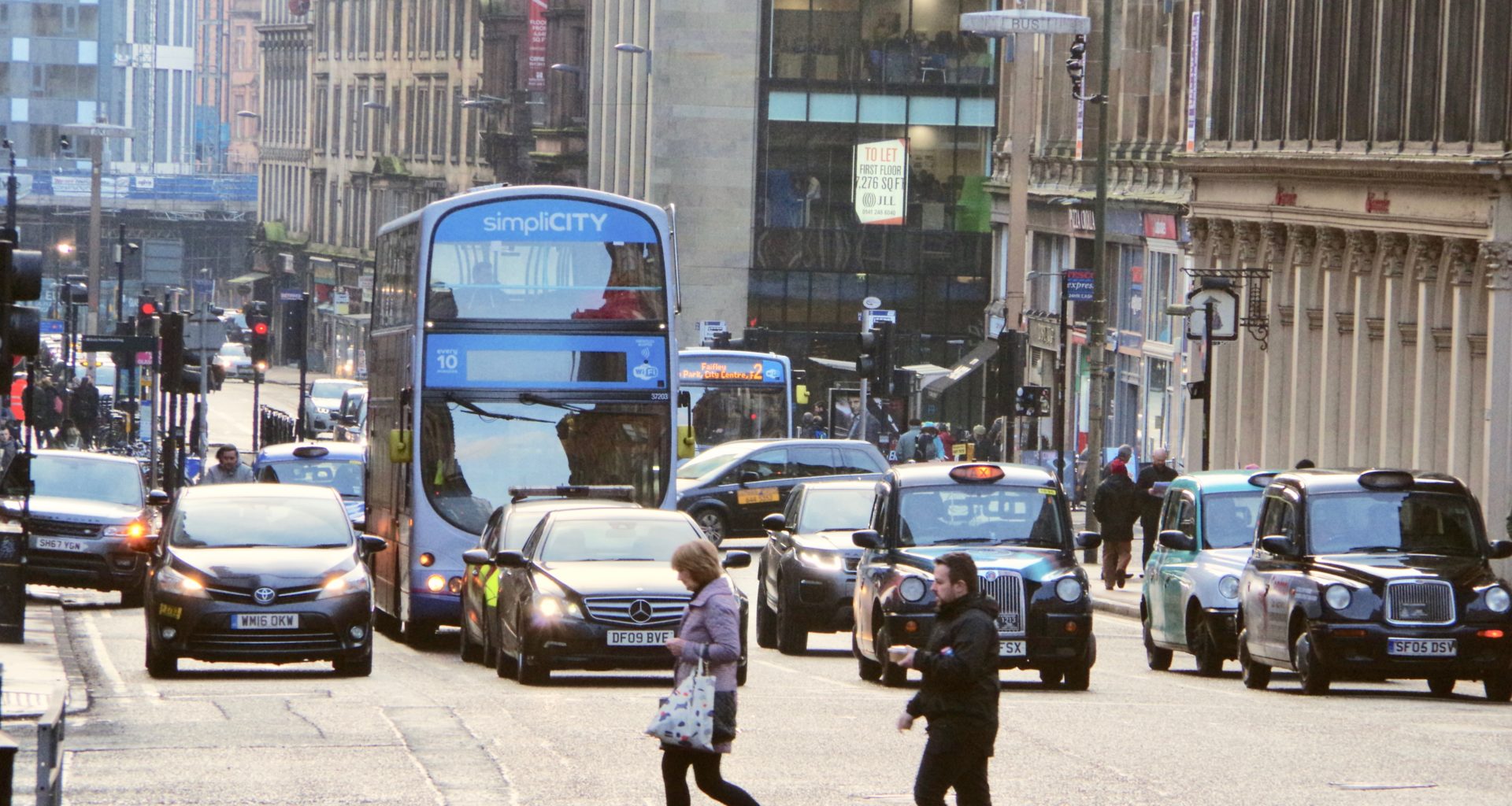The coronavirus lockdown cut toxic exhaust fumes in Scotland’s towns and cities by a third in 2020 – but the reduction only lasted three months.
An analysis of new official figures reveals that for the first time no street breached the annual average safety limits for air pollution, which came into force in 2010.
But the seemingly dramatic improvement was only because polluting traffic was radically reduced during the first lockdown in April, May and June last year.
Campaigners warned that the respite was unlikely to have brought many long term health benefits because traffic levels returned to normal for the rest of the year. They have urged the Scottish Government and councils to “seize the moment” and rethink how we travel.
The Scottish Government argued that urban air quality had improved over the last six years, and promised “fairer and greener transport”. Councils accepted that 2020 was “atypical” and committed to cut air pollution in the future.
The analysis of air pollution across Scotland was carried out by the environmental group, Friends of the Earth Scotland, using government figures covering all of 2020.
Concentrations of the toxic exhaust gas, nitrogen dioxide, on busy urban streets over the year were found to be about 30 per cent lower than in 2019. This was because pollution levels fell significantly after Covid-19 lockdown restrictions began in mid-March.
Pollution rose steeply again in July and August and stayed high for the remainder of the year. But the reductions during lockdown meant that no street breached the average annual limit of 40 microgrammes per cubic metre.
This is the only time that has happened since the limit first applied in 2010. In 2019 and 2018 The Ferret reported that six streets in Glasgow, Edinburgh, Dundee and Inverness breached the nitrogen dioxide limit.

Annual concentrations of tiny sooty particles, which can increase the risk of cancer, heart attacks and strokes, also declined similarly in 2020. No limits were breached, unlike in previous years.
The worst polluted street in 2020 was Hope Street in the heart of Glasgow’s city centre, as has often been the case. It recorded an annual average of just under 36 microgrammes of nitrogen dioxide in a cubic metre of air, four below the legal limit.
Other streets that recorded high levels were: Lochee Road and Seagate in Dundee; Atholl Street in Perth; Academy Street in Inverness; Nicolson Street and St John’s Road in Edinburgh; Wellington Road in Aberdeen; and West Bridge Street in Falkirk.
Air pollution in 2020 and 2019
| Street | 2020 nitrogen dioxide average | 2019 nitrogen dioxide average |
|---|---|---|
| Hope Street, Glasgow | 35.87 | 55.67 |
| Lochee Road, Dundee | 31.09 | 42.96 |
| Atholl Street, Perth | 27.62 | 36.42 |
| Seagate, Dundee | 27.60 | 44.55 |
| Academy Street, Inverness | 26.99 | 42.77 |
| Nicolson Street, Edinburgh | 26.50 | 50.37 |
| West Bridge Street, Falkirk | 25.96 | 37.50 |
| St John's Road, Edinburgh | 25.77 | 41.86 |
| Dumbarton Road, Glasgow | 25.29 | 34.78 |
| Wellington Road, Aberdeen | 25.00 | 35.24 |
| Queensferry Road, Edinburgh | 24.94 | 36.93 |
| Union Street, Aberdeen | 23.79 | 35.54 |
| Whitehall Street, Dundee | 23.13 | 33.35 |
| Market Street, Aberdeen | 22.43 | 31.63 |
| Byres Road, Glasgow | 22.08 | 34.74 |
| Buccleuch Street, Dumfries | 22.05 | 31.13 |
| Broughty Ferry Road, Dundee | 20.95 | 22.93 |
| East Hamilton Street, Greenock | 20.79 | 27.66 |
| Main Street, Cambuslang | 20.76 | 33.33 |
| High Street, Glasgow | 20.66 | 29.82 |
Friends of the Earth Scotland demanded an end to Scotland’s “car-choked” transport system. “It’s a huge pity that it took a deadly pandemic to bring our air quality within legal limits,” said the group’s campaigner, Gavin Thomson.
“Any improvements in air quality in Scotland have been short-lived with traffic quickly returning to pre-pandemic levels.”
He pointed out that pollution damaged health by long-term exposure, such as living near a main road throughout childhood. “So the reduced pollution for a couple of months during the strictest lockdown is unlikely to have many health benefits,” he argued.
“The Scottish Government and councils must seize this moment to re-think how we plan our towns and cities, and how we move around.”
Thomson added: “We need a just and green recovery, including investment in our public transport and more options for safe walking and cycling, to improve the air we breathe permanently.”
According to Dr Mark Miller, the British Heart Foundation senior scientist at the University of Edinburgh, the 2020 lockdown saw a 25-50 per cent fall in nitrogen dioxide pollution globally. There was a smaller reduction in particulate pollution.
He believes that even the short term reduction in pollution would have had benefits. “Both these pollutants are known to have many detrimental effects on our health,” he said.
“Even this short period of cleaner air is likely to have prevented the number of asthma attacks, heart attacks and strokes. However, the real health benefits will only be seen if we can maintain these improvements in air quality.”
Miller pointed out that people who are especially vulnerable to the effects of air pollution are also those who are at most risk from being killed by Covid-19. These include the elderly and those with respiratory problems or heart disease.
He told The Ferret: “It is vital that we learn lessons from this pandemic and ensure that greater priority is given to tackle air pollution long-term.”

Fintan Hurley, a government air pollution adviser for 25 years from the Institute of Occupational Medicine in Edinburgh, urged “big changes” to help keep exhaust emissions low.
“Air pollution is still a major public health problem even when pollution is below current guidelines,” he said.
“The Scottish Government is emphasising joined-up policy making, for example with climate change, equalities, making good places to live and work in. This is a good step in the right direction.”
Hurley added: “However many people now see that more is needed, that we must find ways to make people’s health and wellbeing, fairness, relationships, connectedness and a good environment central to how we plan post-pandemic. We don’t want to return to normal because normal was the problem.”
The Scottish Greens criticised the Scottish Government for postponing progress on establishing low emission zones in cities during the pandemic. “Traffic levels quickly returned to dangerous levels when restriction were lifted, and we have more evidence than ever before just how much damage this does to the lungs and heart,” said the party’s environment spokesperson, Mark Ruskell MSP.
“Instead of encouraging traffic levels to increase, we should have been using this opportunity to plan for healthier, low carbon towns, ensuring that temporary measures to increase space for cyclists and pedestrians are made permanent as a vital public health measure.”
The Scottish Government pointed out that the number of streets breaching legal pollution limits had been falling. Nitrogen dioxide limits were exceeded at 14 sites in 2013, compared to six in 2019.
“While the pandemic and European Union exit have created unprecedented pressures on government, we are committed to a green economic recovery which captures the opportunities of moving to net zero in way that is fair,” said a Scottish Government spokesperson.
“The vision proposed through the national transport strategy and the new cleaner air for Scotland strategy for a fairer and greener transport system, remains as relevant in guiding our actions through and out of this crisis, as it does for the protection of our climate and for our future sustainable economic growth.”
Low emission zones began in Glasgow in 2018 with full enforcement in other cities “on track to commence in the early 2020s”, the spokesperson said. The zones would “lead to a significant reduction in emissions of harmful air pollutants”.
The government stressed it had committed over £500 million for large-scale active travel projects and would phase out the need for new petrol and diesel cars and vans by 2030.
The Convention of Scottish Local Authorities (Cosla) also emphasised its commitment to cutting pollution. “The reduction in carbon emissions during lockdown is a stark reminder that there is scope for change,” said the group’s environment spokesperson, Orkney councillor Steven Heddle.
“Cosla is fully committed to the just transition vision of a low-carbon, resilient and sustainable Scotland with less cars on the road, viable public transport and a strong focus on active travel. Collaboration at a national, local and regional level, and across sectors, will be critical to achieve our shared ambitions.”
The City of Glasgow Council welcomed the suggestion that pollution safety limits in the city had been met. “Whilst levels of nitrogen dioxide have been in decline for several years, last year was clearly atypical,” said a council spokeswoman.
“We are however committed to actions that ensure the continuance of air quality improvement and will we shortly be publishing a renewed and robust air quality action plan. Ongoing initiatives to tackle air pollution include our low emission zone which has seen a progressive improvement in the emissions from the city’s bus fleet.”
She added: “The lockdown has also resulted in significant reallocation of public space for walking, wheeling and cycling through the spaces for people programme which brings air quality benefits. Measures have the potential to become permanent.”
A detailed air pollution spreadsheet compiled by Friends of the Earth Scotland is available here. Photos also thanks to Friends of the Earth Scotland.
This story was published in tandem with the Sunday National.














